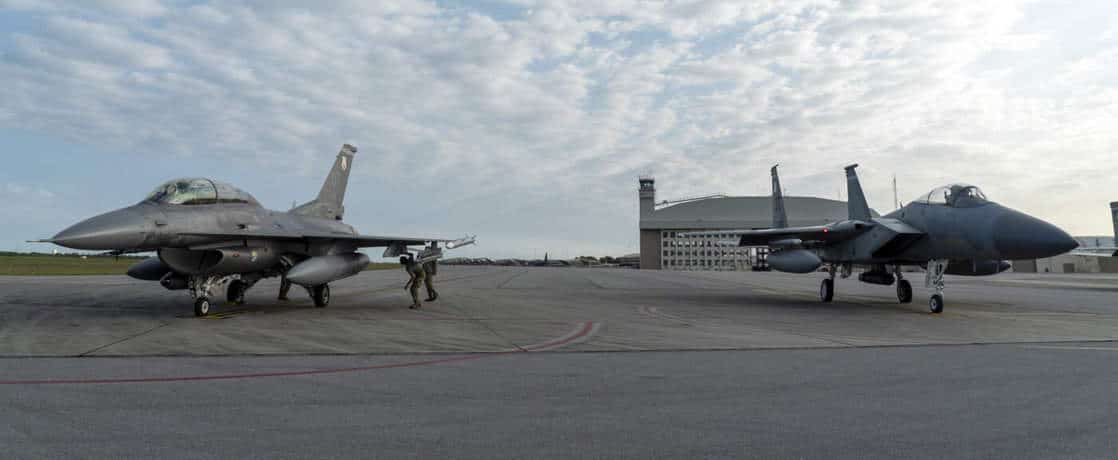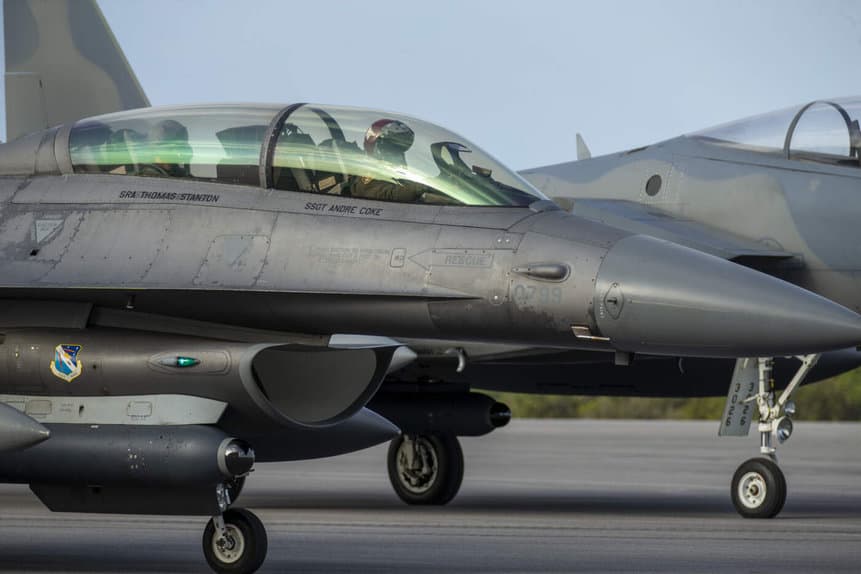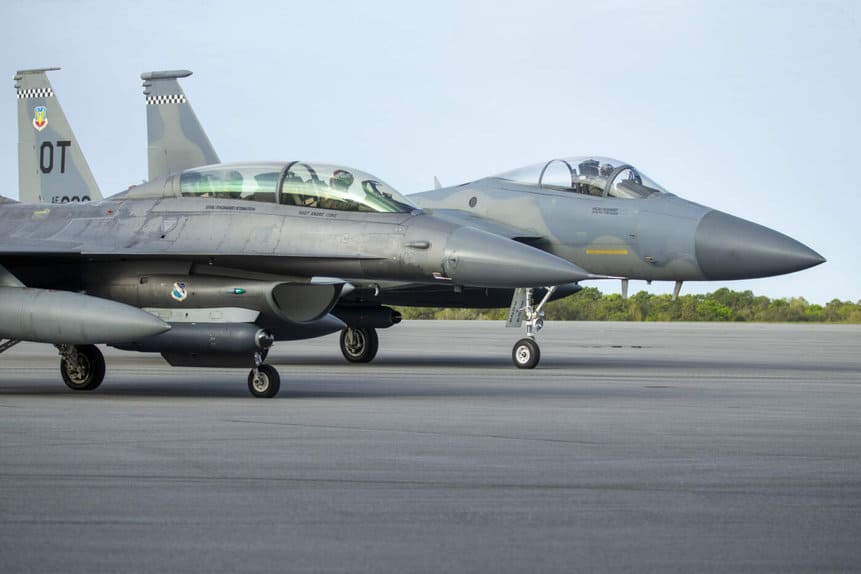The US Air Force (USAF) concluded on April 07 a series of tests with an infrared search and track (IRST) sensor pod mounted on F-15 and F-16 fighters, sharing data via datalink.
In the evaluations, which lasted two weeks, the combat aircraft were able to triangulate the position of a target using only the Legion Pod, produced by Lockheed Martin, without using radar or any other active search resource.
“IRST technology provides a key enabler in the long-range kill chain, as well as the ability to locate targets in a multispectral domain,” said Lt. Col. Jeremy Castor, F-16 sensor program manager for the Operational Flight Program's Combined Test Force.

“Any major force scenario includes multiple types of aircraft, each with different views of the battlespace. The ability to share data provides information to the warfighter that they might not otherwise get.”
An F-15C Eagle and a two-seat F-16D Fighting Falcon, both equipped with the IRST21 mounted in the Legion Pod, utilized the instrument's integrated datalink to share real-time target data. On the F-15, the pod was installed on the central hanger, while on the F-16 it was loaded at the 5R station, on the right side of the air intake.
According to the USAF, the Legion Pod's common interface allows for integration into any aircraft with little or no impact on its core software. This versatility opens the door to integration with minimal effort into other fighters, such as the F-15EX Eagle II, the US Air Force's newest fighter.
“Our next step will be to explore the operationally relevant capabilities that the IRST with an advanced datalink provides to the warfighter,” said Castor. “The ultimate goal is to provide this capability to any aircraft carrying a Legion pod, regardless of platform.”

The first successful test between two F-15s with the IRST21 with integrated data link took place in the Northern Edge exercise, in April 2021. In the case of the F-16, the first successful evaluation with the same system, between two aircraft , took place in December 2021 at Eglin Air Force Base.
The successful completion of this test between the F-15 and F-16 earlier this month marked a significant event in the program's continued progress, highlights the USAF.
The use of IRST provides a great advantage to pilots, since it can detect and track any aircraft (even stealth fighters) passively through its infrared spectrum (heat) without emitting any signal, unlike detection by radars. On the other hand, the IRST can be interfered by atmospheric conditions.
In the past the US employed IRST sensors on its fighters, such as the F-14D Super Tomcat and F-4 Phantom II, but did not install it on the F-15 and F-16. It was expected that the F-22 would also receive IRST, which did not happen. Technology has returned on the F-35 in the form of the EOTS. Russia, on the other hand, has never abandoned IR sensors. European models such as the Rafale, Typhoon and Gripen E have organic IRST.
Do you want to receive our news firsthand? Click Here and be part of our Group on Whatsapp or Telegram.


